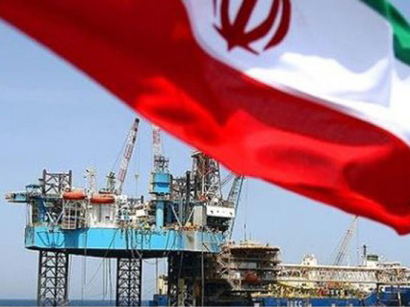Baku, Azerbaijan, June 16
By Elena Kosolapova - Trend:
For Iran, foreign investment is the key – both to enhance recovery in aging fields and in the development of new fields, and the timetable of each is being affected by the current U.S. presidential election, Dr. Micha’el Tanchum, a specialist in energy geopolitics and the author of the “A Post Sanctions Iran and the Eurasian Energy Architecture” published by the Atlantic Council believes.
“While it is true that Iran needs to improve the terms of its new oil contract models to attract investors, the most significant factor affecting the timetable of foreign investments is the U.S. presidential election,” Tanchum told Trend by email on June 17.
The analyst believes that European international oil companies, particularly some of those that had a position in Iran’s energy sector such as BP, Eni, Repsol, Shell, Statoil, Total, are eager to invest in Iran.
But foreign investors are waiting to see what level of continuity will exist between the policies of the next U.S. president and the policies of the current U.S. President Barack Obama, according to the expert. “With one of the two major presidential candidates having declared that he would seek to ‘renegotiate’ the Iran deal, there is too much uncertainty for foreign investors to finalize their decisions,” Tanchum said.
He noted that the next US president’s term begins on January 20, 2017 and his/her policy toward Iran will likely crystalize sometime during the first three months in office. “Thus, if U.S. policy toward Iran continues on its current overall trajectory, we could see the finalization of investment decisions in Iran’s energy sector by the end of 2017 or in 2018,” Tanchum said.
Speaking about Iranian oil production, the expert noted that prior to the 2012 sanctions on Tehran, Iran was producing about 4.4 million barrels a day (mbd) but its production stood at about 2.8 mbpd or 64 percent of the pre-2012 level in January 2016.
Since January 2016 when the Joint Comprehensive Plan of Action between Iran and the P5+1 nations was implemented, Iran has increased its crude oil output to 3.8 mbd, about 53 percent of which is exported, and is on track to reach an output level of 4 mbd by the end of 2016 with a 5 percent spare production capacity, the expert said referring to official Iranian statistics.
“Iran’s accomplishment will encourage foreign investment if contract terms are sufficiently attractive and U.S.-Iranian relations continue on their overall constructive course,” Tanchum said.
The expert believes that the deposit in West Karoun field close to Iran’s border with Iraq is one of the most promising sources of new production.
“Over the next five years these field could increase Iran’s production capacity, with output ranging from 300,000 to 700,000 barrels per day. Major new fields like Yadavaran and Azadegan require greater development and therefore more foreign investment,” he said.
According to BP, Iran ranked fourth in the world in terms of proven oil reserves, which amounted to 21.7 billion tons at the beginning of 2016.
Edited by SI






